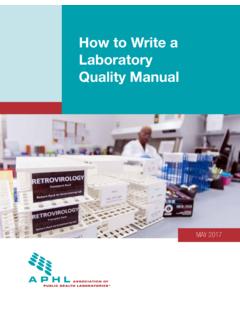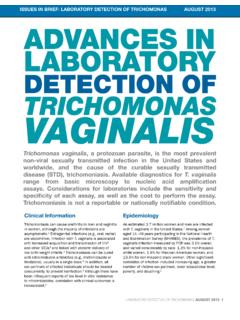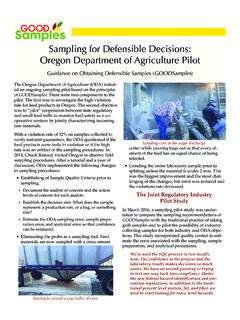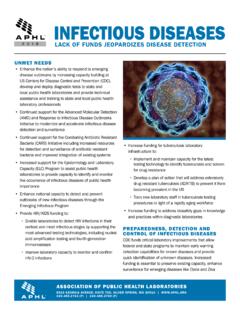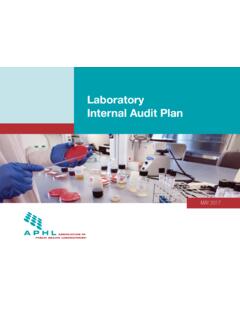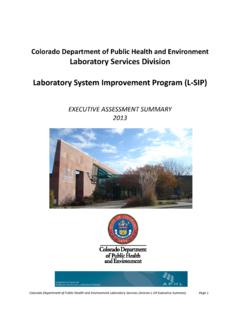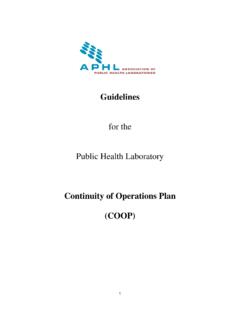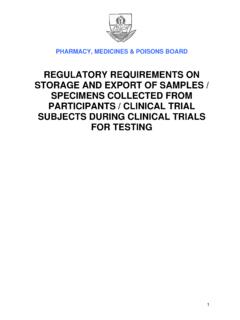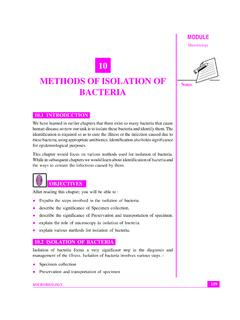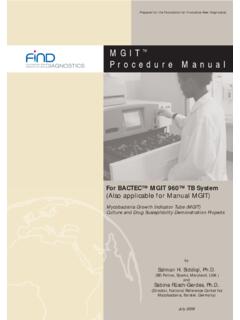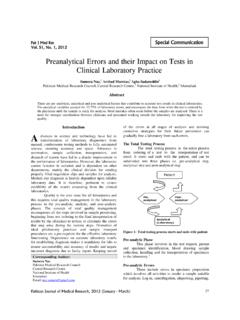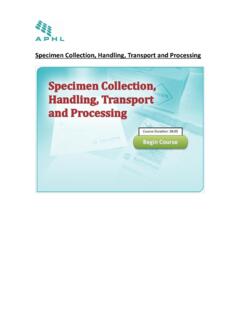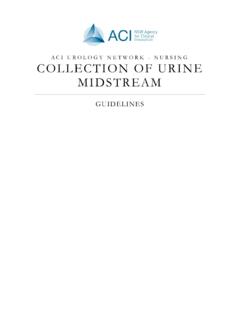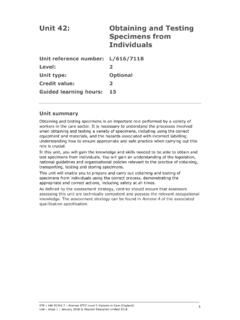Transcription of Ct Values: What They Are and How They Can be Used - APHL
1 Ct Values: What They Are and How They Can be Used Version 2 May 6, 2021 | Introduction There are many factors that impact the use and interpretation of Ct values that are generated during real-time PCR testing. Diagnostic laboratories should not include Ct values on laboratory reports because it could be out of compliance with laboratory regulations and they should not be used to inform patient management. In some instances, Ct values may provide information that assists in prioritizing or informing public health surveillance, contact tracing and investigations, but APHL does not yet recommend this as a routine practice.
2 This is an area that requires further investigation and gathering of data before that step is taken. Sharing and interpreting Ct values in the context of public health surveillance or a public health investigation should always be done in consultation with jurisdictional public health laboratory epidemiology staff. What are nucleic acid amplification tests (NAATs)? There are several different kinds of diagnostic tests that detect the nucleic acid (DNA or RNA) of a pathogen in a patient specimen . The majority of these assays work by amplifying the target nucleic acid present, but they do not tell us whether the pathogen is infectious or alive.
3 NAATs can be based on different types of chemical reactions, including real-time polymerase chain reaction (real-time PCR), transcription-mediated amplification (TMA), loop-mediated isothermal amplification (LAMP) or other chemistries. Different types of NAATs may be reported differently. NAATs may be developed as multiplex assays, meaning they can detect multiple pathogen targets in one test. What are COVID-19 Diagnostic NAATs? There are many different NAAT-based tests to detect SARS-CoV-2 RNA for the diagnosis of COVID-19, some based on real-time PCR ( , the CDC Diagnostic Panel, Cepheid Xpert Xpress SARS-CoV-2, Roche Cobas SARS-CoV-2) and others based on methods like TMA ( , Hologic Aptima SARS-Cov-2 or LAMP).
4 A full list can be obtained on the FDA s EUA website. NAATs for COVID-19 diagnostic testing are generally very sensitive, meaning they can detect very low levels of viral RNA, and very specific, meaning they detect only SARS-CoV-2 RNA. All of the commercially available diagnostic NAAT tests for COVID-19 in the US are qualitative tests the test produces a qualitative result of positive or negative. The tests are NOT designed to provide a semi-quantitative or quantitative measurement of the level of viral RNA in the specimen . What is a Ct value?
5 Many NAAT tests generate a number as part of the test result. For real-time PCR, this is called the Ct or cycle threshold value. A Ct value is defined as the number of amplification cycles required to reach a fixed background level of fluorescence at which the diagnostic result of the real-time PCR changes from negative (not detectable) to positive (detectable). The total number of cycles required to exceed the established threshold to call a result positive is specific to that test platform, and generally ranges from about 15 to 45 cycles. Different tests calculate the Ct values differently, and different tests also count the number of cycles differently.
6 Some tests generate the Ct value through software installed on the instrument itself, some require the operator to interpret and define the Ct value based on parameters set by the test manufacturer, while others do not generate a Ct value that is available or visible to the operator and simply provide a positive or negative test result. In addition, some tests have an established Ct cutoff beyond which the test result is considered negative; for others, the cutoff is the last cycle of the test. These parameters are determined by the test manufacturer and cannot be altered by the laboratory performing the test.
7 Ct Values: What They Are and How They Can be Used Version 2 May 6, 2021 Ct Values: What They Are and How They Can be Used Version 2 May 6, 2021 | Is there variability in Ct values? Short answer: Yes. The number of cycles required for detectable amplification of viral RNA is dependent on a long list of variables beyond simply how much viral RNA is present in a patient specimen . The relative impacts of these variables on the Ct value differs between test platforms and can vary widely. Variables that can impact Ct values include but are not limited to: Pre-analytic Variables Efficiency of the collection of specimen Time of collection of specimen after onset of infection specimen type matrix effect specimen type level of viral RNA in different specimen types ( , upper vs.)
8 Lower respiratory tract) can differ between specimens from the same patient at the same time Storage and transport conditions of specimen prior to testing Age of specimen Analytic Variables Nucleic acid extraction efficiency Amount of viral RNA in the specimen Nature of the target RNA and design of the primer/probe sequences Efficiency of the real-time PCR chemistry in the assay (singleplex, multiplex) Method for defining/determining Ct value I can get a quantitative test for HIV, why can t I get one for COVID-19? Short answer: They are not currently commercially available in the US.
9 Quantitative viral load assays are specifically designed for this purpose. They are run on specimen types that mitigate the impact of variables on the Ct value and include controls and calculations to assess viral load. For example, an HIV quantitative viral load assay is performed on a blood specimen . This specimen is homogenous and can be collected in a very standardized manner. The real-time PCR assay used to calculate viral load includes a set of controls to standardize the specimen ( , a control for specimen adequacy) and a set of standards ( , known dilutions of virus for calibration).
10 Ct values of the patient specimen are compared to those of the standard curve to calculate the viral load in a standardized specimen . This type of assay is not yet available for SARS-CoV-2. Respiratory specimens are not homogeneous and are challenging to standardize. The collection process of a respiratory specimen does not lend itself to quantifying the amount of virus present. Each swab collection is different and does not assure that the same amount of sample is collected. Quality of specimen collection is impacted by other variables including the skill of the collector, which nostril is swabbed first, or whether the patient recently ate or drank.
